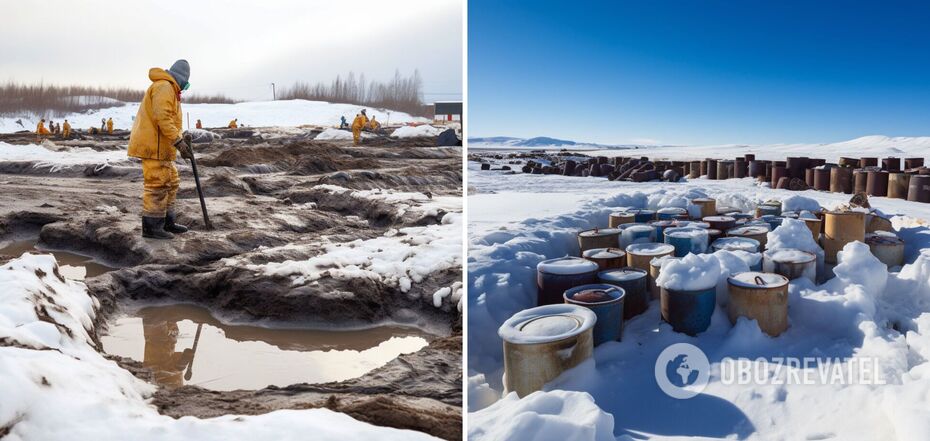Life
Arctic permafrost can "poison" the entire region: What is the threat to mankind from its melting
The melting of Arctic glaciers and permafrost due to global warming may bring mankind a new, previously unexpected problem: pollution of the environment with toxic substances. We are talking about antibiotic-resistant bacteria, viruses, and even radioactive waste.
As writes the edition of Science News, the authors of the first comprehensive study on this topic warned. They published in the journal Nature Communications the results of their work, aimed at determining where the melting of permafrost in the Arctic may lead to the release of industrial pollutants.
According to scientists, already by the end of this century, a warming climate could destabilize more than 2,000 industrial sites, such as mines and pipelines, and endanger more than 5,000 already polluted areas. And, according to permafrost researcher Moritz Langer of the Alfred Wegener Institute in Potsdam, Germany, this is just the tip of the iceberg.
Why the Arctic could be dangerous
Emissions of toxic substances from Arctic regions can pose a danger to fish in local water bodies. And, consequently, have a bad impact on the health of the people who depend on them.
Permafrost is any soil, sediment, or rock that remains frozen for at least two years. People thought they were stable for decades and used the land to bury industrial waste, particularly radioactive waste.
Researchers say climate change is causing the Arctic to heat up nearly four times faster than the rest of the planet, and up to 65 percent of the permafrost in the region could disappear by 2100. And this threatens to release toxic substances hidden in its depths.
What might be the extent of the problem
In an effort to determine where warming could spread industrial pollutants, Langer and his colleagues first analyzed the range of Arctic permafrost and the location of industrial infrastructure. They found about 4,500 sites, including oil fields, mines and abandoned military installations in places where permafrost is likely to exist. The team then used pollution data from Alaska and Canada - regions with available information - and found that as of January 2021, there were about 3,600 contaminated sites in those two regions. These include wastelands and sites of accidental release of contaminants.
That said, Langer suggests that these numbers may be an understatement. After all, many cases of contamination probably go undocumented. In particular, substances that are released into the environment are not documented, making it difficult to understand the risks.
Researchers have now found from available data that in Alaska, diesel fuel, gasoline and related petrochemicals account for about half of the reported contaminants. Lead, arsenic and mercury, substances toxic to fish, humans and other organisms, have also been reported.
What the future may hold for the Earth
Using data on the location of industrial sites and pollution in North America, Langer and his colleagues extrapolated where industrial pollution and permafrost might coexist across the Arctic. It turned out that between 13,000 and 20,000 such sites might exist today.
Next, the researchers resorted to computer modeling to study the effects of current and future levels of climate change. It turned out that today there is a degradation of permafrost at about 1000 known industrial sites and 2200-4800 known and suspected contaminated sites.
When scientists analyzed a relatively optimistic scenario with a moderate warming to the end of the century of 2 degrees Celsius over pre-industrial levels, they found that these numbers would increase to more than 2,100 industrial sites and between 5,600 and 10,000 contaminated areas. If the temperature increase is within 4.3 degrees Celsius, then the melting will likely affect almost all known and projected locations.
According to Langer and colleagues, their results may be very conservative because the analysis did not take into account that infrastructure itself can warm the ground. Right now, no international regulations require businesses in the Arctic to document the substances they use and store, or what happens to them. Without this information, Langer says, it will be difficult to assess and manage the growing risk of contamination. The scientist plans to visit old oil rigs in Canada to study how permafrost changes have affected the contents of drilling fluids. This should help scientists understand how industrial contaminants spread across the landscape.
Earlier OBOZREVATEL told how due to the actions of the Russian occupiers dolphins are dying en masse in Crimea.
Subscribe to OBOZREVATEL channels in Telegram and Viber to keep up with the latest developments.



























